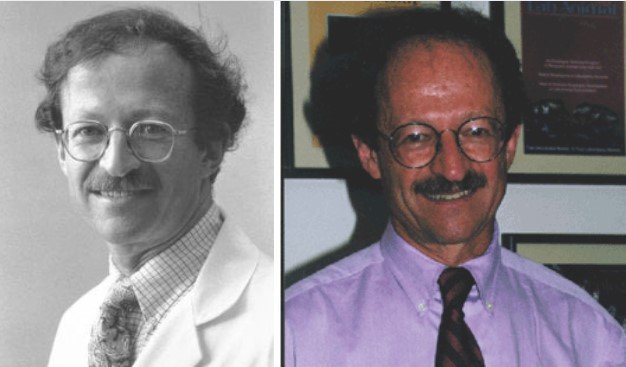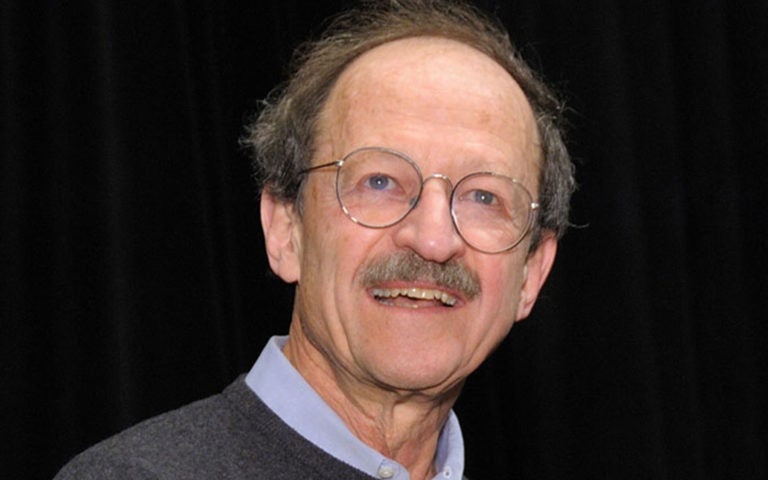Celebrity
World-Renowned American Scientist Harold E. Varmus Life And Career
Published
2 days agoon
By
Bella P
Harold E. Varmus is a world-renowned American scientist, Nobel laureate, and medical leader whose discoveries have revolutionized modern cancer research and molecular biology. His groundbreaking work on the genetic basis of cancer has saved countless lives and inspired generations of scientists. As both a visionary researcher and a public servant, Varmus has dedicated his life to advancing biomedical science and improving global health.
Quick Bio Table
| Full Name | Harold Eliot Varmus |
|---|---|
| Date of Birth | December 18, 1939 |
| Age | 85 years (as of 2025) |
| Birthplace | Oceanside, New York, United States |
| Nationality | American |
| Profession | Scientist, Physician, Researcher |
| Known For | Discovery of Proto-Oncogenes, Cancer Research, NIH and NCI Leadership |
| Education | Ph.D. in Molecular Biology, Harvard University; M.D., Columbia University |
| Institutional Affiliations | National Institutes of Health (NIH), National Cancer Institute (NCI), Weill Cornell Medicine |
| Field of Study | Oncology, Genetics, Molecular Biology |
| Years Active | 1969–Present |
| Awards | Nobel Prize in Physiology or Medicine (1989) |
Introduction

Harold E. Varmus is one of the most influential scientists of the 20th and 21st centuries. As a Nobel Prize-winning molecular biologist, he has made landmark contributions to understanding how normal cellular genes can become cancer-causing. Beyond the laboratory, his leadership at the National Institutes of Health (NIH) and National Cancer Institute (NCI) helped shape national and international research policy. His career reflects a lifelong commitment to curiosity, collaboration, and scientific progress for the benefit of humanity.
Early Life and Background

Born on December 18, 1939, in Oceanside, New York, Harold E. Varmus grew up in a family that valued education, service, and intellectual curiosity. His father was a physician, and his mother was a social worker — influences that nurtured both his compassion and his interest in medicine. As a young student, Varmus excelled academically and was deeply drawn to both literature and science, studying English at Amherst College before turning toward medicine.
His early fascination with the intersection of science and humanity would later define his approach to medical research: combining deep biological inquiry with a sense of purpose and social responsibility.
Age and Physical Appearance
At 85 years old, Harold E. Varmus continues to be active in science and education. He has a warm and thoughtful presence, marked by his signature glasses, calm demeanor, and intellectual poise. Despite his decades-long career, he remains deeply engaged with emerging research and the mentorship of young scientists. His energy, curiosity, and eloquence continue to inspire both students and colleagues alike.
Education and Academic Formation

Harold E. Varmus earned his bachelor’s degree from Amherst College in 1961, where he studied English literature before realizing his calling in medicine. He went on to earn his M.D. from Columbia University’s College of Physicians and Surgeons in 1966. While completing his medical studies, he discovered a passion for biomedical research and decided to pursue advanced scientific training.
He joined Harvard University for a Ph.D. in molecular biology, where he was introduced to cutting-edge genetic and viral research. These academic experiences shaped his future in molecular oncology — the study of cancer at the level of genes and molecules.
Career Beginnings
After completing his education, Harold E. Varmus began his research career at the National Institutes of Health, where he studied the relationship between viruses and cancer. In 1970, he joined the University of California, San Francisco (UCSF) as a faculty member. There, he met his long-time collaborator J. Michael Bishop, with whom he would make one of the most important discoveries in modern biology.
Their research focused on retroviruses — viruses that can insert their genetic material into host cells. In a groundbreaking revelation, Varmus and Bishop discovered that normal cellular genes could mutate to form oncogenes, which trigger uncontrolled cell growth and cancer. This discovery fundamentally changed how scientists understand the genetic origins of cancer.
Rise to Prominence
The discovery of proto-oncogenes catapulted Harold E. Varmus into global recognition. In 1989, he and Bishop were awarded the Nobel Prize in Physiology or Medicine for this landmark achievement. Their work provided the foundation for molecular oncology — the study of how normal cellular processes become corrupted to form cancerous growths.
This breakthrough had far-reaching effects. It transformed cancer diagnosis, drug development, and therapy, leading to targeted cancer treatments that have improved survival rates worldwide. Varmus’s contributions moved cancer research from the realm of mystery into a precise, genetic science.
Scientific Philosophy and Research Vision
Harold E. Varmus believes that science is a form of exploration — a process of discovery that requires curiosity, rigor, and openness. His scientific philosophy is grounded in collaboration, interdisciplinary work, and the idea that research should serve humanity.
He often emphasizes that the greatest scientific achievements come from teamwork and communication. Throughout his career, he has encouraged open data sharing, diversity in research institutions, and support for young investigators. His leadership has advanced not only scientific understanding but also the culture of science itself.
Leadership Roles and Contributions
In addition to his laboratory research, Harold E. Varmus has served in some of the most influential scientific leadership roles in the world. In 1993, President Bill Clinton appointed him asIn addition to his laboratory research, Harold E. Varmus has served in some of the most influential scientific leadership roles in the world. In 1993, President Bill Clinton appointed him as Director of the National Institutes of Health (NIH). During his tenure, Varmus modernized the agency, expanded funding for biomedical research, and launched initiatives in genetics, neuroscience, and cancer research.
After leaving the NIH, he became President of Memorial Sloan Kettering Cancer Center, one of the world’s leading cancer hospitals. In 2010, he was appointed by President Barack Obama as Director of the National Cancer Institute (NCI), where he continued to advocate for personalized medicine and genomic research.
Through these roles, he helped shape U.S. science policy, promote global research collaboration, and strengthen the link between laboratory discoveries and clinical care.
Major Achievements and Impact
Harold E. Varmus has contributed to nearly every aspect of biomedical science — from fundamental research to public policy. Among his most significant achievements are:
- The discovery of proto-oncogenes and their role in cancer development.
- Leading efforts to expand genetic and genomic research at NIH and NCI.
- Supporting the Human Genome Project, which decoded the blueprint of human life.
- Advocating for open access to scientific publications, helping found PubMed Central, a free archive for biomedical research.
- Promoting the integration of science with healthcare policy, ensuring that research findings translate into improved patient care.
His efforts have transformed how research is conducted, shared, and applied, making him one of the most influential scientists in the world.
Awards and Recognitions
In addition to the Nobel Prize, Harold E. Varmus has received numerous awards and honors, including the National Medal of Science, Albert Lasker Award, and election to the National Academy of Sciences and American Academy of Arts and Sciences. He is also an honorary member of several international scientific organizations and continues to be recognized for his advocacy in science education and policy.
Personal Life and Interests
Outside of his professional work, Harold E. Varmus is known for his humility and intellectual depth. He is married to Constance Casey, a journalist, and they have two sons. He is also an avid cyclist, reader, and supporter of the arts. His interests in literature, poetry, and music reflect his belief that creativity and science are deeply connected.
Even in his later years, he continues to teach, mentor, and write about science, leadership, and the importance of evidence-based policy.
Philanthropy and Mentorship
A strong advocate for education and accessibility, Harold E. Varmus has dedicated much of his time to mentoring young scientists and promoting open science. He co-founded Public Library of Science (PLOS), a nonprofit that provides free access to scientific research. His dedication to mentorship has helped shape the careers of many leading researchers who now continue his legacy of innovation and service.
Legacy and Future Outlook
The legacy of Harold E. Varmus is both scientific and humanitarian. His discoveries have reshaped our understanding of cancer and genetics, while his leadership has modernized how science is practiced and shared. Through his advocacy for open data, equity in research, and scientific communication, he has ensured that knowledge serves all people, not just the privileged few.
As he continues to speak and write about the future of biomedical research, Varmus remains a guiding light in the scientific community — a symbol of how intellect, empathy, and integrity can advance both science and society.
Conclusion
From his Nobel-winning research on oncogenes to his leadership at NIH and NCI, Harold E. Varmus has left an indelible mark on modern science. His discoveries have saved lives, shaped policies, and inspired countless scientists worldwide. The legacy of Harold E. Varmus stands as a testament to the power of knowledge, collaboration, and the enduring quest to understand and heal the human body.
FAQs
Who is Harold E. Varmus?
Harold E. Varmus is an American scientist, physician, and Nobel Prize-winning molecular biologist known for his research on cancer genes.
What is Harold E. Varmus known for?
He is best known for discovering proto-oncogenes and for leading the NIH and National Cancer Institute.
When did he win the Nobel Prize?
He received the Nobel Prize in Physiology or Medicine in 1989 with J. Michael Bishop.
What positions has he held?
He has served as NIH Director, NCI Director, and President of Memorial Sloan Kettering Cancer Center.
What is his contribution to open science?
Varmus co-founded PubMed Central and PLOS to make scientific research freely available to the public.
What is Harold E. Varmus’s legacy?
His legacy includes transforming cancer research, promoting open science, and shaping U.S. biomedical policy.
Is Harold E. Varmus still active?
Yes, he continues to write, mentor, and speak about science and public health.
What inspired Harold E. Varmus to pursue science?
His background in literature and medicine inspired a lifelong curiosity about the biological foundations of life and disease.
What impact has his work had on cancer treatment?
His research paved the way for targeted cancer therapies and a genetic understanding of how cancer develops.
For More Updates And Stories Visit To: Dooper Magazine

Who Is Michael O. Johnson? (All About Business Executive & Former Herbalife Chairperson

BlueFlame PublishingNet: Igniting the Future of Modern Publishing

Previpagos3g: The Future of Digital Insurance Payments

Who Is Lucas Chevalier? All About the French Soccer Goalkeeper

Who Is Gary Rhodes? All About the British Restaurateur and Celebrity Chef

World-Renowned American Scientist Harold E. Varmus Life And Career

Who Is Vesna Dragojević? All About Oliver Dragojević’s Wife

SparkPressFusion com: The Future of Smart Content Publishing

Who Is Dougie Vipond? All About the Scottish Broadcaster and Drummer

The Journey of Galton Blackiston Inside a British Chef’s Culinary World

Who Is John Pankow? All About the American Actor

Michael Atherton as Broadcaster A Voice Beyond Cricket

Who Is Mark Bowe? All About the TV Personality

Who Is Cade Foehner? All About Cade Foehner Singer & His Journey

Who Is Jennifer English? All About the British Actress

Philippe Bianchi Insights into Jules Bianchi’s Father

Who Is Brooks Darnell? All About the Talented Actor

Serialpressit com Review: Is It Legit, Safe, or a Scam? Complete 2025 Guide

Cevurı: The Future of Simplified Digital Transformation

Who Is Dan Jeannotte? All About the Talented Canadian Actor

Who Is Michael O. Johnson? (All About Business Executive & Former Herbalife Chairperson

BlueFlame PublishingNet: Igniting the Future of Modern Publishing

Previpagos3g: The Future of Digital Insurance Payments

Who Is Lucas Chevalier? All About the French Soccer Goalkeeper

Who Is Gary Rhodes? All About the British Restaurateur and Celebrity Chef

World-Renowned American Scientist Harold E. Varmus Life And Career

Who Is Vesna Dragojević? All About Oliver Dragojević’s Wife

SparkPressFusion com: The Future of Smart Content Publishing

Who Is Dougie Vipond? All About the Scottish Broadcaster and Drummer

The Journey of Galton Blackiston Inside a British Chef’s Culinary World
Trending
-

 Celebrity8 months ago
Celebrity8 months agoWho Is Mindy Jennings? Inside the Life of Ken Jennings’ Wife
-

 Celebrity7 months ago
Celebrity7 months agoWho Is Angela Simmons? All About Her Business, Fame, and Personal Life
-

 Celebrity7 months ago
Celebrity7 months agoWho Is Dexter Keaton? Everything About Diane Keaton’s Daughter
-

 Celebrity7 months ago
Celebrity7 months agoWho Is Mikayla Demaiter? From Ice Hockey to Modeling Success
